Abstract
Compared with other serum and blister fluid proteins, total hemolytic complement was reduced in the blister fluid of six serologically positive bullous pemphigold patients while four serologically negative cases had blister fluid complement levels closely approaching the serum levels. Except for pemphigus vulgaris blisters. blister fluids from most patients with other bullous diseases and experimentally induced blisters had blister fluid complement levels more closely approaching the serum levels. With the exception of the two terminal components. C8 and C9, individual components of the complement sequence were also reduced in the blister fluids of the six bullous pemphigold patients with circulating basement membrane zone antibodies. On the other hand, transferrin and IgG levels of these same six serologically positive blister fluids closely approached the corresponding serum levels. Conversion of C3 proactivator was also demonstrable in the serologically positive bullous pemphigoid blister fluids, but not in the corresponding sera. Our studies, therefore, are suggestive of local activation of the complement sequence, by both the classical and alternate pathways, in blisters of serologically positive bullous pemphigold patients.
Full text
PDF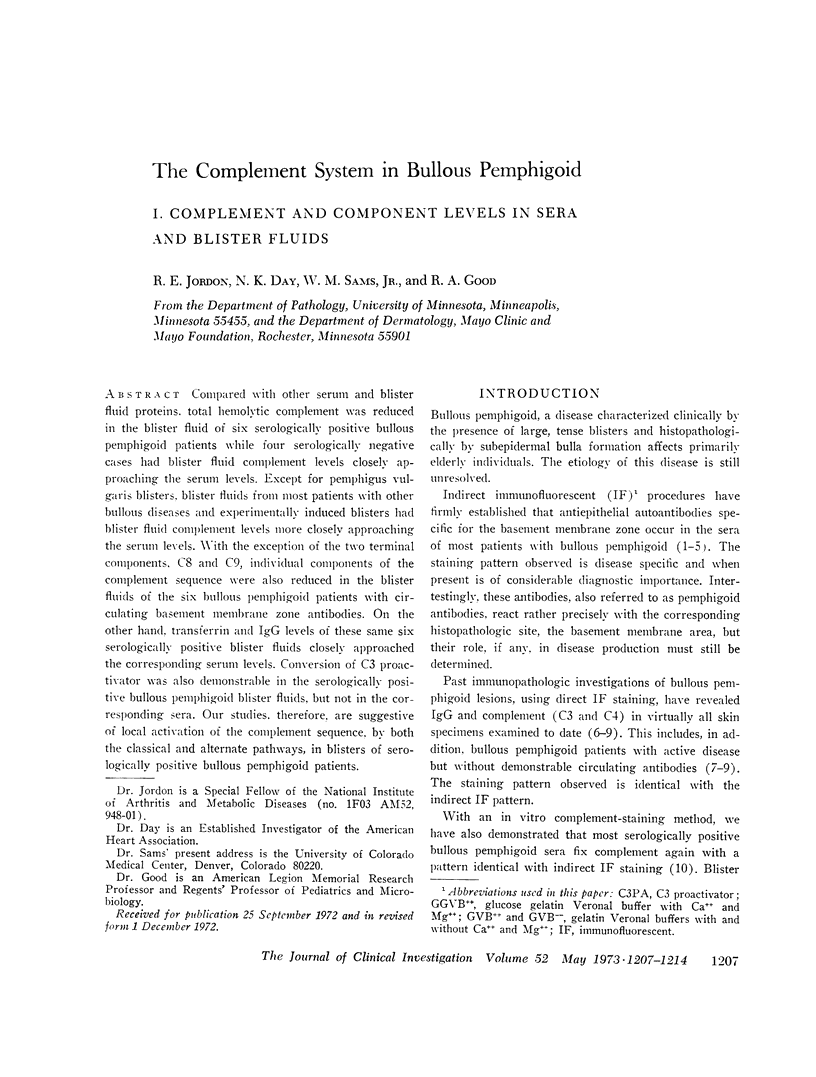
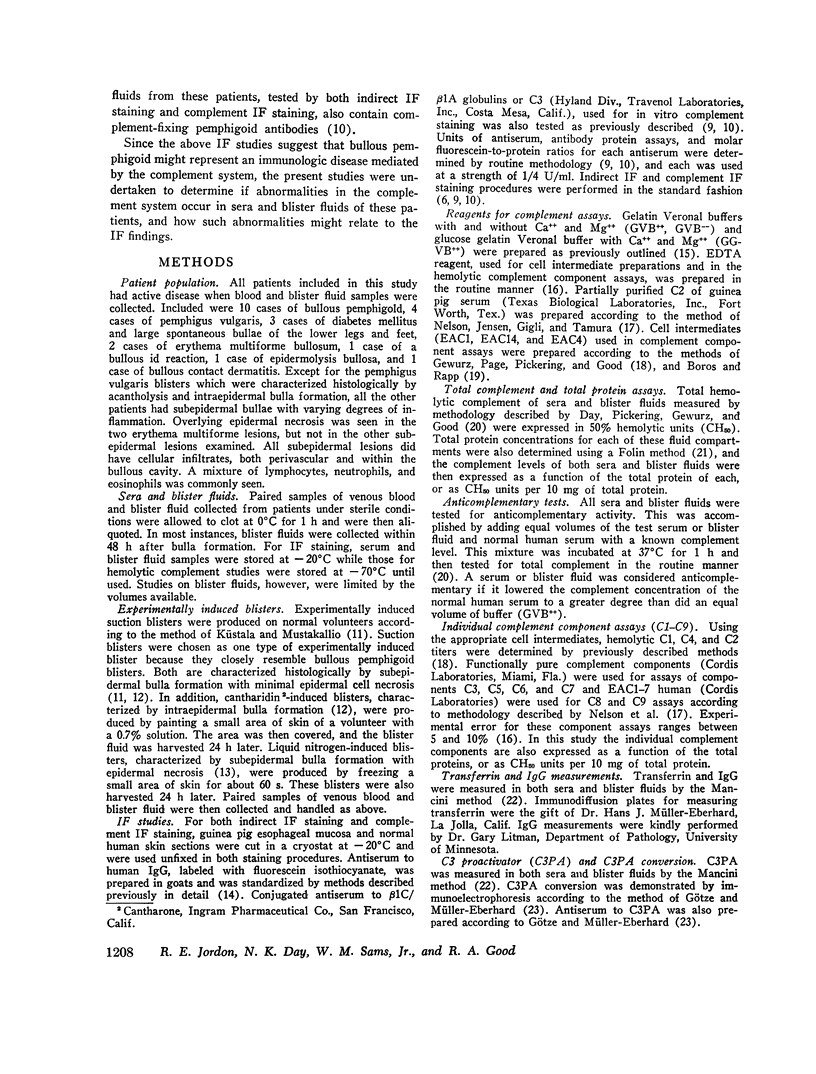
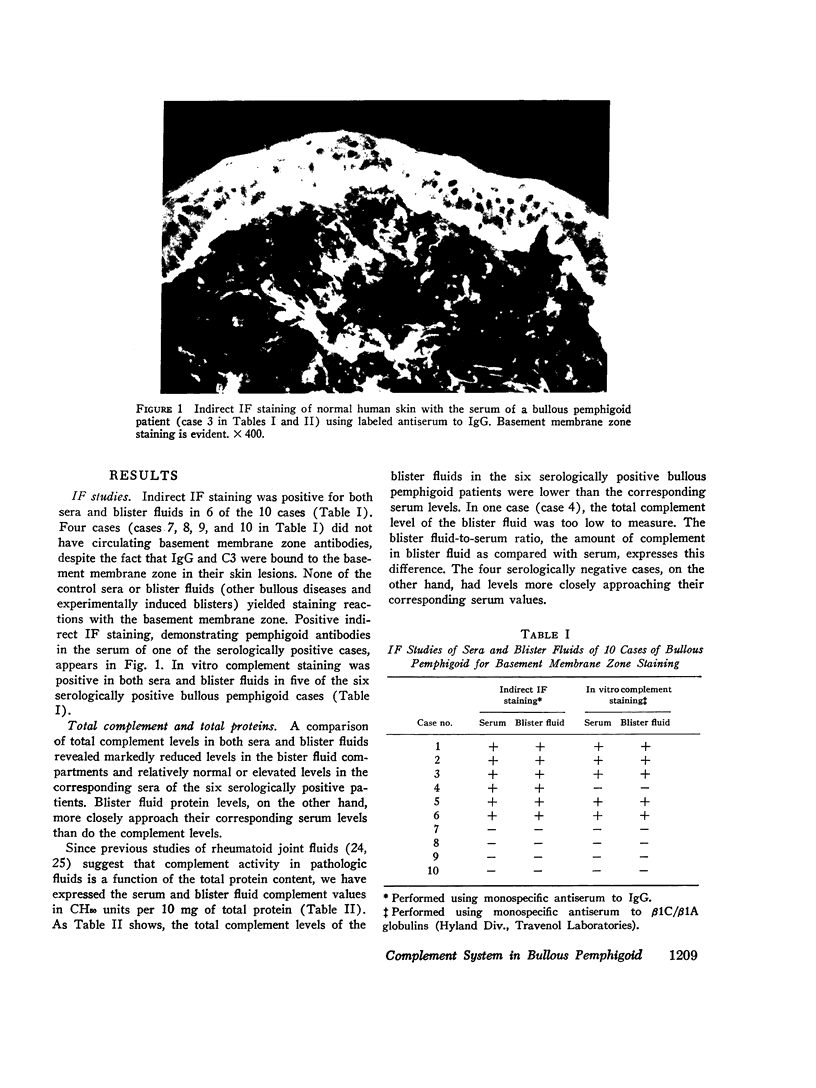
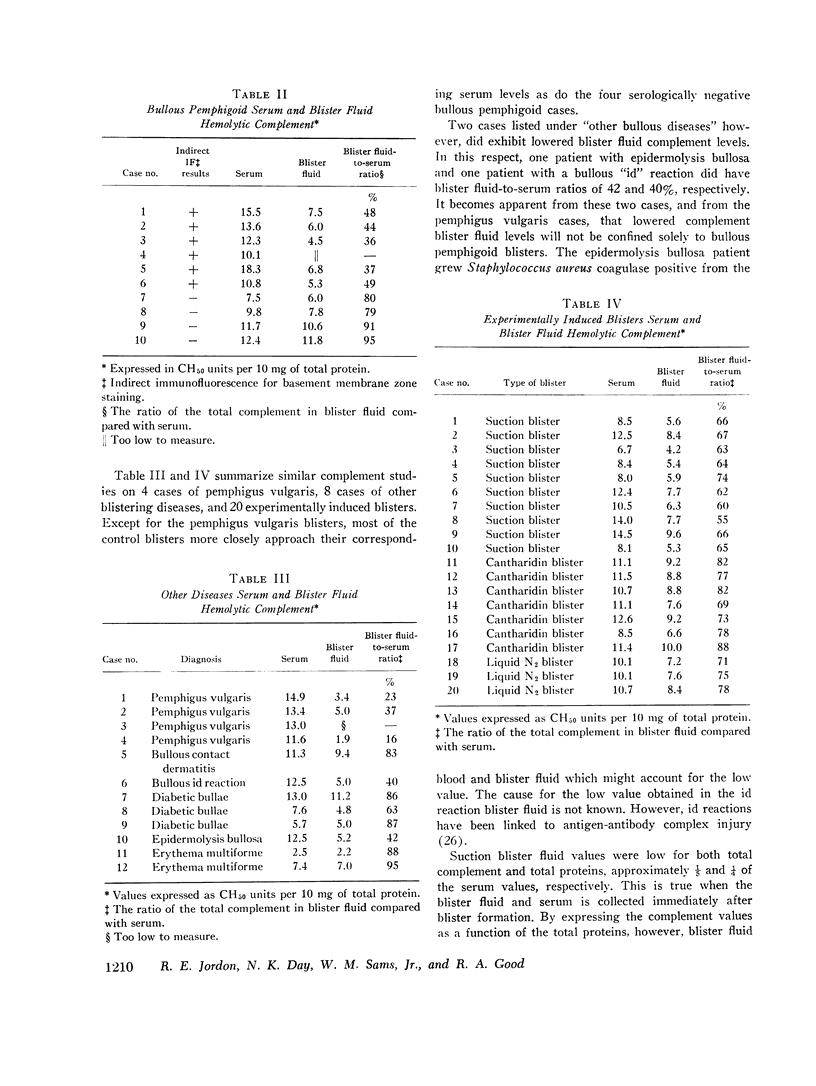
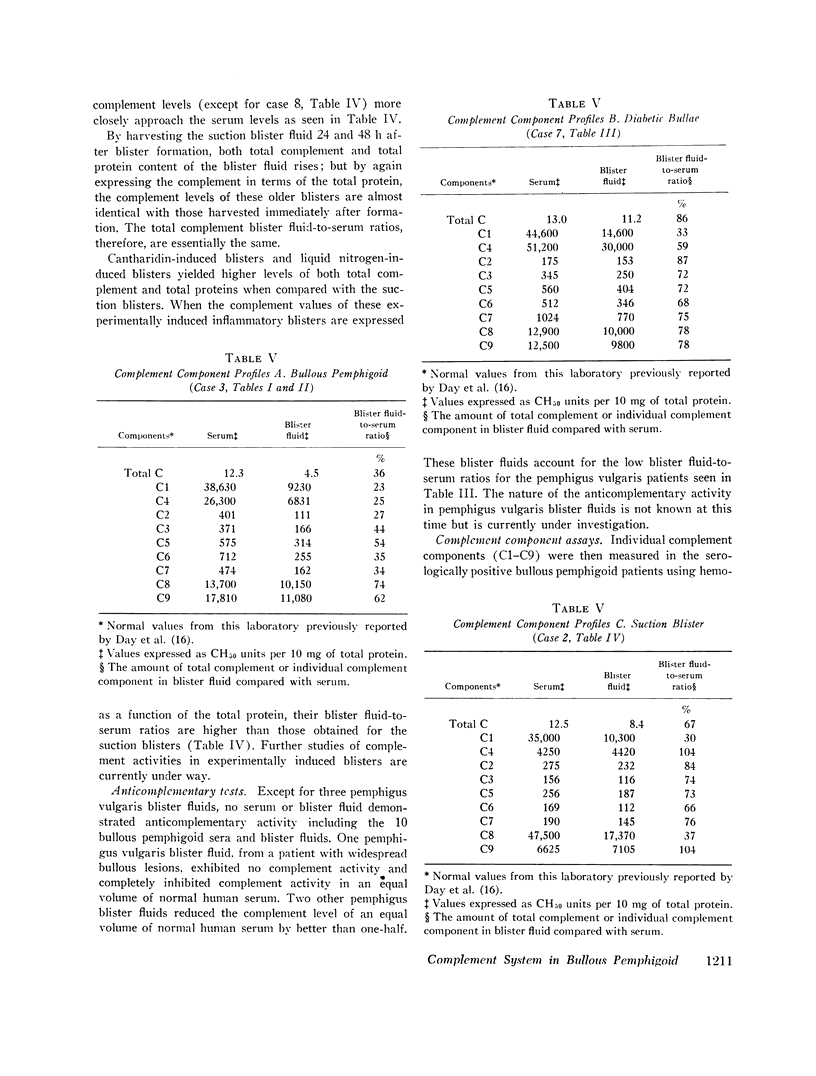
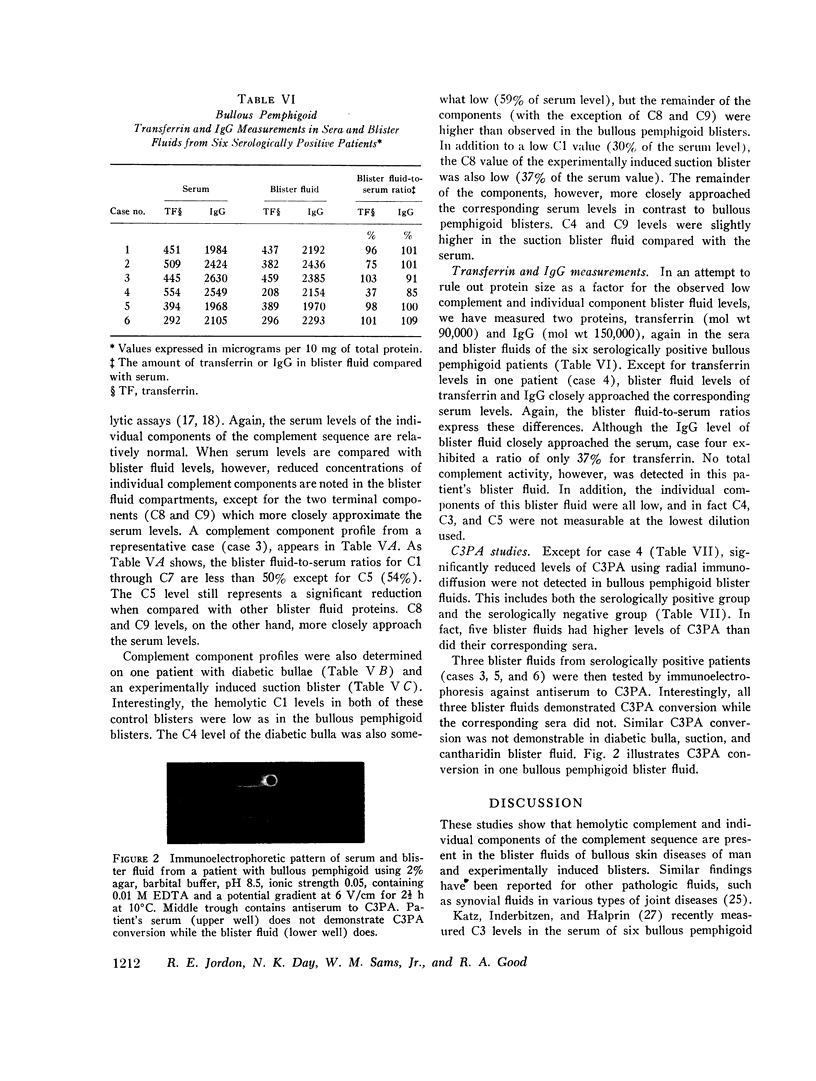
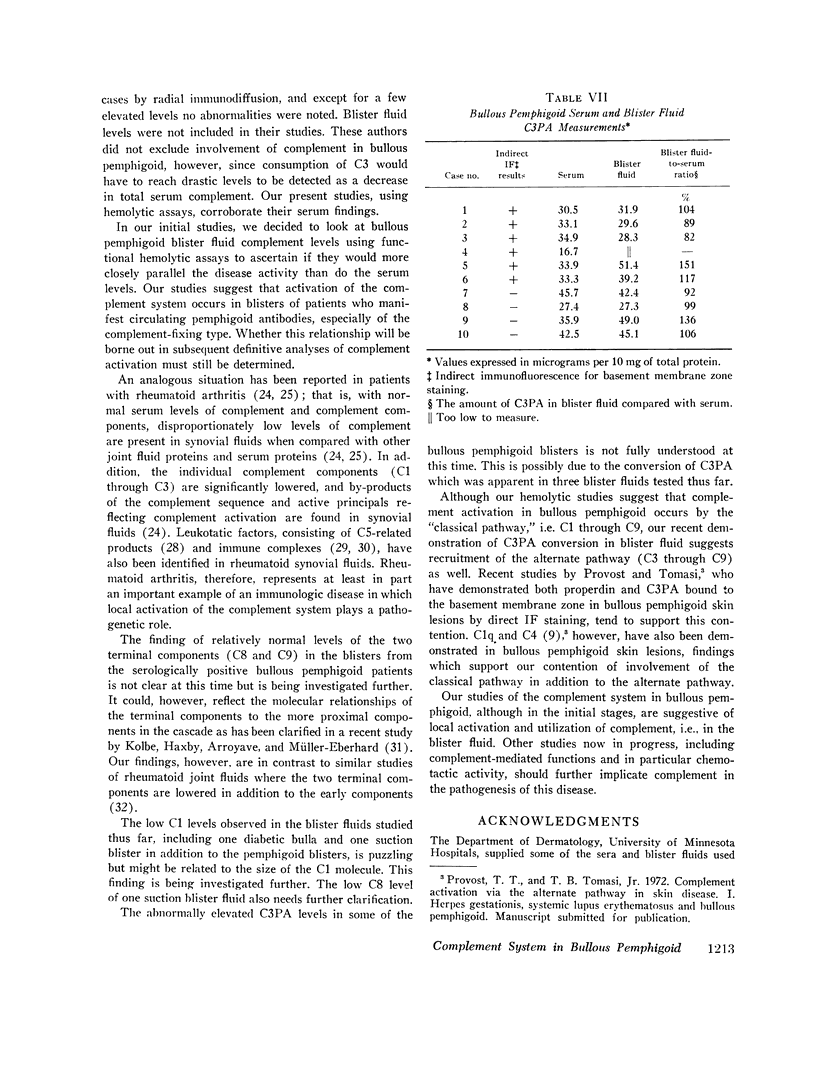
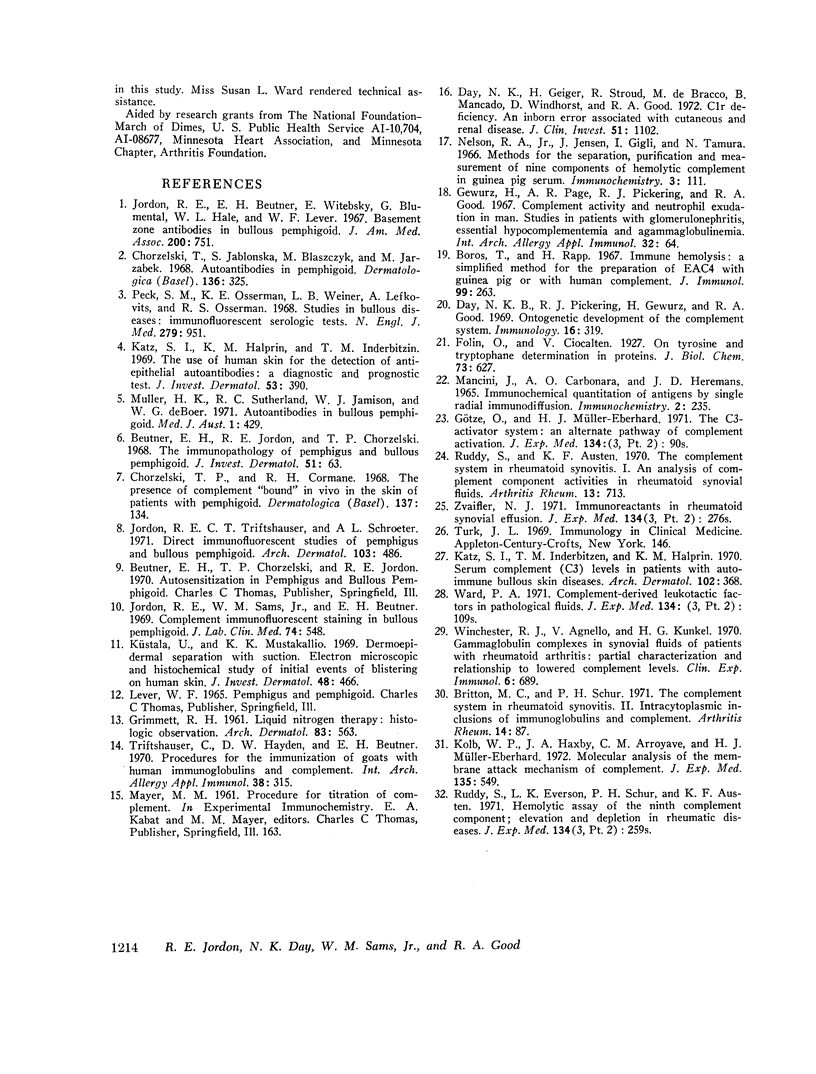
Images in this article
Selected References
These references are in PubMed. This may not be the complete list of references from this article.
- Beutner E. H., Jordon R. E., Chorzelski T. P. The immunopathology of pemphigus and bullous pemphigoid. J Invest Dermatol. 1968 Aug;51(2):63–80. [PubMed] [Google Scholar]
- Borsos T., Rapp H. J. Immune hemolysis: a simplified method for the preparation of EAC'4 with guinea pig or with human complement. J Immunol. 1967 Aug;99(2):263–268. [PubMed] [Google Scholar]
- Britton M. C., Schur P. H. The complement system in rheumatoid synovitis. II. Intracytoplasmic inclusions of immunoglobulins and complement. Arthritis Rheum. 1971 Jan-Feb;14(1):87–95. doi: 10.1002/art.1780140111. [DOI] [PubMed] [Google Scholar]
- Chorzelski T. P., Cormane R. H. The presence of complement "bound" in vivo in the skin of patients with pemphigoid. Dermatologica. 1968;137(3):134–138. doi: 10.1159/000254042. [DOI] [PubMed] [Google Scholar]
- Chorzelski T., Jablońska S., Blaszczyk M., Jarzabek M. Autoantibodies in pemphigoid. Dermatologica. 1968;136(5):325–334. doi: 10.1159/000254118. [DOI] [PubMed] [Google Scholar]
- Day N. K., Geiger H., Stroud R., DeBracco M., Mancaido B., Windhorst D., Good R. A. C1r deficiency: an inborn error associated with cutaneous and renal disease. J Clin Invest. 1972 May;51(5):1102–1108. doi: 10.1172/JCI106902. [DOI] [PMC free article] [PubMed] [Google Scholar]
- Day N. K., Pickering R. J., Gewurz H., Good R. A. Ontogenetic development of the complement system. Immunology. 1969 Mar;16(3):319–326. [PMC free article] [PubMed] [Google Scholar]
- GRIMMETT R. H. Liquid nitrogen therapy. Histologic observations. Arch Dermatol. 1961 Apr;83:563–567. doi: 10.1001/archderm.1961.01580100027004. [DOI] [PubMed] [Google Scholar]
- Gewurz H., Page A. R., Pickering R. J., Good R. A. Complement activity and inflammatory neutrophil exudation in man. Studies in patients with glomerulonephritis, essential hypocomplementemia and agammaglobulinemia. Int Arch Allergy Appl Immunol. 1967;32(1):64–90. doi: 10.1159/000229917. [DOI] [PubMed] [Google Scholar]
- Jordon R. E., Beutner E. H., Witebsky E., Blumental G., Hale W. L., Lever W. F. Basement zone antibodies in bullous pemphigoid. JAMA. 1967 May 29;200(9):751–756. [PubMed] [Google Scholar]
- Jordon R. E., Sams W. M., Jr, Beutner E. H. Complement immunofluorescent staining in bullous pemphigoid. J Lab Clin Med. 1969 Oct;74(4):548–556. [PubMed] [Google Scholar]
- Jordon R. E., Triftshauser C. T., Schroeter A. L. Direct immunofluorescent studies of pemphigus and bullous pemphigoid. Arch Dermatol. 1971 May;103(5):486–491. doi: 10.1001/archderm.103.5.486. [DOI] [PubMed] [Google Scholar]
- Katz S. I., Halprin K. M., Inderbitzin T. M. The use of human skin for the detection of anti-epithelial autoantibodies. A diagnostic and prognostic test. J Invest Dermatol. 1969 Dec;53(6):390–399. doi: 10.1038/jid.1969.166. [DOI] [PubMed] [Google Scholar]
- Katz S. I., Inderbitzin T. M., Halprin K. M. Serum complement (C'3) levels in patients with autoimmune bullous skin diseases. Arch Dermatol. 1970 Oct;102(4):368–370. [PubMed] [Google Scholar]
- Kiistala U., Mustakallio K. K. Dermo-epidermal separation with suction. Electron microscopic and histochemical study of initial events of blistering on human skin. J Invest Dermatol. 1967 May;48(5):466–477. [PubMed] [Google Scholar]
- Kolb W. P., Haxby J. A., Arroyave C. M., Müller-Eberhard H. J. Molecular analysis of the membrane attack mechanism of complement. J Exp Med. 1972 Mar 1;135(3):549–566. doi: 10.1084/jem.135.3.549. [DOI] [PMC free article] [PubMed] [Google Scholar]
- Mancini G., Carbonara A. O., Heremans J. F. Immunochemical quantitation of antigens by single radial immunodiffusion. Immunochemistry. 1965 Sep;2(3):235–254. doi: 10.1016/0019-2791(65)90004-2. [DOI] [PubMed] [Google Scholar]
- Muller H. K., Sutherland R. C., Jamieson W. J., De Boer W. G. Autoantibodies in bullous pemphigoid. Med J Aust. 1971 Feb 20;1(8):429–431. doi: 10.5694/j.1326-5377.1971.tb87630.x. [DOI] [PubMed] [Google Scholar]
- Nelson R. A., Jr, Jensen J., Gigli I., Tamura N. Methods for the separation, purification and measurement of nine components of hemolytic complement in guinea-pig serum. Immunochemistry. 1966 Mar;3(2):111–135. doi: 10.1016/0019-2791(66)90292-8. [DOI] [PubMed] [Google Scholar]
- Peck S. M., Osserman K. E., Weiner L. B., Lefkovits A., Osserman R. S. Studies in bullous diseases. Immunofluorescent serologic tests. N Engl J Med. 1968 Oct 31;279(18):951–958. doi: 10.1056/NEJM196810312791801. [DOI] [PubMed] [Google Scholar]
- Ruddy S., Austen K. F. The complement system in rheumatoid synovitis. I. An analysis of complement component activities in rheumatoid synovial fluids. Arthritis Rheum. 1970 Nov-Dec;13(6):713–723. doi: 10.1002/art.1780130601. [DOI] [PubMed] [Google Scholar]
- Ruddy S., Everson L. K., Schur P. H., Austen K. F. Hemolytic assay of the ninth complement complement component: elevation and depletion in rheumatic diseases. J Exp Med. 1971 Sep 1;134(3 Pt 2):259s–275s. [PubMed] [Google Scholar]
- Triftshauser C., Hayden D. W., Beutner E. H. Procedures for the immunization of goats with human immunoglobulins and complement. Int Arch Allergy Appl Immunol. 1970;38(3):315–319. doi: 10.1159/000230284. [DOI] [PubMed] [Google Scholar]
- Ward P. A. Complement-derived leukotactic factors in pathological fluids. J Exp Med. 1971 Sep 1;134(3 Pt 2):109s–113s. [PubMed] [Google Scholar]
- Winchester R. J., Agnello V., Kunkel H. G. Gamma globulin complexes in synovial fluids of patients with rheumatoid arthritis. Partial characterization and relationship to lowered complement levels. Clin Exp Immunol. 1970 May;6(5):689–706. [PMC free article] [PubMed] [Google Scholar]
- Zvaifler N. J. Immunoreactants in rheumatoid synovial effusions. J Exp Med. 1971 Sep 1;134(3 Pt 2):276s–285s. [PubMed] [Google Scholar]




